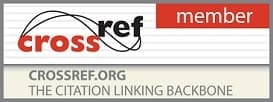- Printed Journal
- Indexed Journal
- Refereed Journal
- Peer Reviewed Journal
P-ISSN: 2394-1685 | E-ISSN: 2394-1693 | CODEN: IJPEJB
Impact Factor (RJIF): 5.38
2019, Vol. 6, Issue 4, Part C
Nurturing physical literacy in India: A comprehensive study
Author(s): Dr. Hasmukhbhai Haribhai Patel
Abstract:
The term "Physical Literacy" holds various interpretations around the world. Nevertheless, according to the comprehensive definition provided by the International Physical Literacy Association, it encompasses motivation, self-assurance, knowledge, and a deep appreciation for engaging in physical activities throughout one's entire lifetime. Physical literacy extends beyond the mere acquisition of fundamental movement and sports skills; it constitutes a holistic concept applicable to all individuals throughout their lifespans. In an educational context, this concept advocates for enriching and meaningful experiences for every child, enabling them to progress on their unique physical literacy journeys. Moreover, physical literacy encompasses the capacity to "comprehend" the dynamics of specific situations and environments and to respond appropriately as a complete individual.
The imperative to promote physical literacy arises from the growing prevalence of lifestyle related illnesses, declining levels of physical activity, a dearth of focus on personal experiences within physical activity settings, and a perceived exclusivity within such settings. Although the concept has garnered global attention for the past decade, it has gained significant traction in the past five years, largely due to the efforts of Pullela Gopichand and his team. Between 2016 and 2017, this team diligently pursued various initiatives aimed at advancing physical literacy. Numerous other organizations and entities have also joined in championing this cause. The Physical Literacy Movement holds profound benefits for all Indians, offering lifelong health and an improved quality of life.
Pages: 201-203 | 80 Views 40 Downloads
Download Full Article: Click Here
How to cite this article:
Dr. Hasmukhbhai Haribhai Patel. Nurturing physical literacy in India: A comprehensive study. Int J Phys Educ Sports Health 2019;6(4):201-203.








 Research Journals
Research Journals